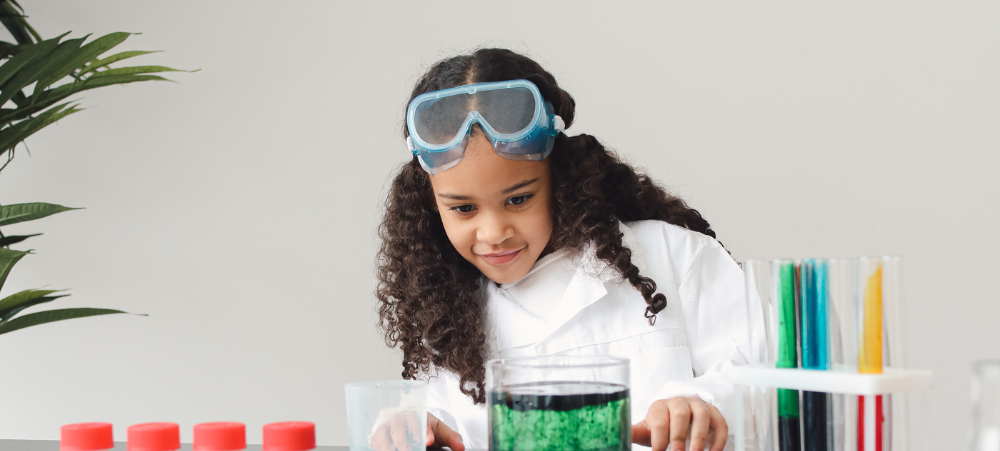The word causes many headaches for parents, especially in a homeschooling environment. Experiments usually involve complex processes, chemicals with names no one can pronounce, and costly lab equipment. This is one of the reasons why experiments are sometimes neglected and pushed aside. But why is experimentation so necessary?
Experiments play many roles in science. One of its essential roles is to test theories and provide the basis for scientific knowledge. One can argue that our lives are a daily experiment of trial and error, and experimentation is crucial to knowledge development, thus essential to a child’s development.
Something so crucial to development should never be neglected. But experimentation does not have to be costly or complex. Sometimes the simpler the experiment, the more effective it is.
You do not need a Hitech lab to be a successful scientist. In and around your house is an array of materials that can be used for experiments. And finding these materials can be a fun activity on its own. These activities are educational and fun and can bring the whole family together. At Evolve Online, we incorporate as many of these fun, simple experiments into our daily teaching. Allowing learners to discover the brilliant world of science for themselves. We also delve into the technical side by exposing our learners to a virtual lab in the form of LABster. Truly the combination of science and technology gives the learner the best of both worlds. As the saying goes, “technology is the application of scientific knowledge to the practical aims of human life.”
I have included a straightforward experiment that can open the conversation about the importance of carbon to all living organisms.
Chemistry experiment:
Demonstrate that living things contain carbon:
Materials:
- 1 Lit Candle
- Paper
- Pencil
- Leaves
- Sugar
- Can lid
- Tongs
- Bowl of water
Steps:
1. Light the candle. Hold a can lid in the candle flame with the tongs. Cool the top and wipe off the black stuff called soot. This is carbon.
2. Make a pencil mark on the paper, then rub your finger in it. The black spot on your finger is Carbon.
3. Burn paper and leaves. What happens to them?
4. Heat some sugar on a can lid. What will happen to the sugar?
Did you know?
You were burning some materials that were alive. When boiling is completed, only carbon is left. Carbon is an element represented by the symbol C. The paper, leaves, and sugar turned black – Carbon. If carbon is heated to a very high temperature, it can form the gas carbon dioxide. Topsoil is darker in colour than subsoil because it contains rotten plants and animals, which contain carbon.
Why is Carbon so vital to us?
Carbon is an essential element for all life forms on Earth. Whether these life forms take in carbon to help manufacture food or release carbon as part of respiration, the intake and output of carbon is a component of all plant and animal life. Carbon is in a constant state of movement from place to place. Carbon’s molecular structure allows it to form stable bonds with other elements, including itself, making it the central component of organic compounds. It makes up almost 20% of the weight of an organism, and they need to live, grow, and reproduce.
References:
365 Science Experiments





